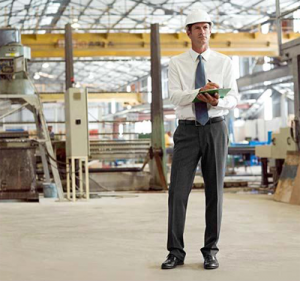 If one aspect of humanity stands as a testament to our progress over the years, it’s our architectural achievements. From the earliest huts to today’s skyscrapers, our structures have evolved as a testament to our technological prowess.
If one aspect of humanity stands as a testament to our progress over the years, it’s our architectural achievements. From the earliest huts to today’s skyscrapers, our structures have evolved as a testament to our technological prowess.
Among the many materials we use, steel stands out for its strength, versatility, and endurance. But even the strongest steel structures aren’t invincible. In the structural engineering world, one dire event we strive to prevent at all costs is steel structure failure.
Steel structure failure is not just a jargon-laden term tossed around by engineers. It refers to the structural instability that happens when a steel structure can no longer support the applied loads. The potential repercussions of such failures range from financial losses to significant safety hazards, which is why it’s so important to understand, detect, and remedy these failures promptly.
What is Steel Structure Failure?
Steel structure failure refers to a scenario where a steel structure loses its ability to safely bear the loads it was designed to withstand. This can be due to several factors, including:
- Design errors
- Manufacturing flaws
- Extreme environmental conditions
- Natural deterioration over time
- Poor-quality materials and coating systems
- Improper construction techniques
- Inadequate or neglectful maintenance practices
While the term ‘failure’ might suggest a sudden, catastrophic event, it’s important to note that most failures develop over time. This results in a gradual weakening of the structure until it reaches a critical point. Exact causes are often determined through a structural failure analysis performed by a forensic structural investigator.
Failure doesn’t necessarily mean the complete collapse of a structure, either. It could be localized to a specific component of the structure, affecting its overall integrity. It could also manifest as significant deformation or displacement, compromising the structure’s functionality even if it remains standing.
Detecting Steel Structure Failure
Detecting a steel structure failure in its early stages is a key aspect of preventive maintenance. It involves regular inspection, thorough assessment, and careful monitoring.
Generally, structural engineers look for signs of distress such as deformations, cracks, rust, or unusual movement in the structure. Modern technology, such as drone inspections and structural health monitoring (SHM) systems, has also made this process easier and more efficient.
It’s also essential to understand the structure’s history, including its design, materials used, construction processes, and the loads it has been subjected to. This knowledge allows engineers to better predict where weaknesses might occur and to assess the overall structural integrity.
In some cases, advanced non-destructive testing methods such as ultrasonic testing, magnetic particle inspection, or radiographic testing might be required to detect hidden flaws or damage.
Understanding the Causes of Steel Structure Failure
Identifying the cause of a steel structure failure is a crucial step in the remediation process. As we mentioned above, there are a number of contributing factors that could result in such an event.
Once the cause has been discovered, an effective solution can be created. Often, this involves an investigation by the structural engineer to understand the background behind the failure so that they can work from a more complete picture of what has led up to this point.
For example, design errors might include miscalculations of load-bearing capacity, poor choice of materials, or inadequacies in the design itself. Construction issues might involve poor welding practices, inadequate fastening, or the use of faulty components. On the maintenance front, lack of regular inspections and ignoring early signs of distress can lead to failure over time.
During a diagnostic investigation, a structural engineer may request original building plans or other documentation that they can review for any design errors that could have contributed to the steel structure failure. This review would be in conjunction with visual inspections to look for more apparent signs like environmental damage or poor construction practices.
Remedying Steel Structure Failure
Remediation of steel structure failure involves both repairing the existing damage and preventing future failures. The exact methods used will depend on the extent of the damage, the cause of the failure, and the specific requirements of the structure.
That said, some common methods of repair include welding and/or bolting of additional steel to the existing structure. In severe cases, it may be necessary to replace whole components or even conduct a complete structural overhaul. The cost and scope of these projects will vary based on severity and urgency.
Preventative measures are just as important as repairs in remedying steel structure failure. This might involve improving design practices, using higher-quality materials, enhancing construction techniques, or implementing more stringent maintenance routines. Regardless of the specific measures taken, the aim is always to ensure the long-term safety and functionality of the structure.
Humid environments, such as our home state of North Carolina, are high-risk zones for steel structure failures due to their higher risk of corroding metals. If you are concerned about potential environmental damage to the structural steel components of your building, you may want to consider scheduling periodic inspections with a local structural engineer so that they can advise whether preventative maintenance will be necessary in the near future.
Importance of Expertise in Preventing and Remedying Failures
Structural engineering isn’t just about designing and building structures; it’s also about ensuring their longevity and safety. This requires a deep understanding of materials, design principles, construction practices, and maintenance protocols. It also necessitates staying up-to-date with the latest technologies, methodologies, and regulations.
When dealing with steel structure failure, expertise can make all the difference. A deep understanding of structural behavior, combined with experience in diagnostics and remediation techniques, allows engineers to effectively address and prevent such failures. It’s a vital aspect of maintaining the integrity of our built environment and ensuring the safety of those who inhabit it.
Get Help with Preventing and Remedying Steel Structure Failures in the Raleigh, NC Area
A Structural Innovations, our team of experienced structural engineers are committed to helping building owners throughout the Raleigh, NC metro area prevent damage to their buildings and ensure their longevity. We also serve as a trusted partner in guiding the design and construction of new projects for safe and successful completion.
To learn more about getting help with your own building’s potential or current steel structure failure, contact us today.

